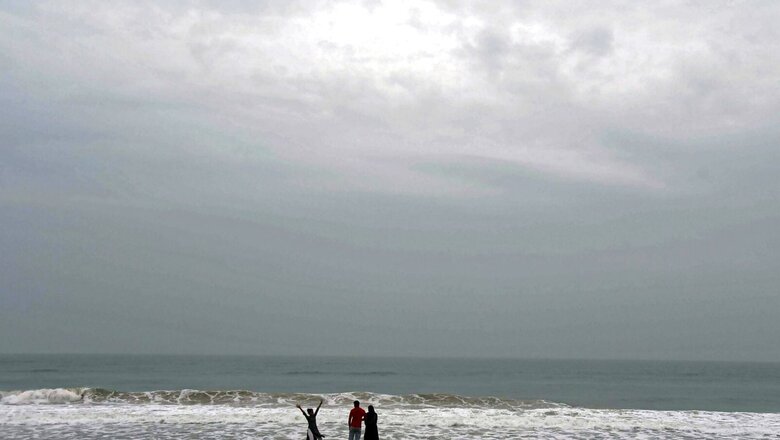
views
With a record rise in extreme weather events, the United Nations (UN) on Wednesday announced a new ambitious target — to bring people across the world under an early warning system against any natural disaster within the next five years.
The World Meteorological Organization (WMO) has been tasked to spearhead the effort and present an action plan at the next UN climate conference – COP27, scheduled to be held in Egypt this November.
“Human-caused climate disruption is damaging every region. The most recent Intergovernmental Panel on Climate Change (IPCC) report details the suffering already happening. Each increment of global heating will further increase the frequency and intensity of extreme weather events,” said UN Secretary-General António Guterres. “We must invest equally in adaptation and resilience, including the information that allows us to anticipate storms, heatwaves, floods, and droughts.”
A part of the plan is to strengthen countries’ current monitoring of the real-time atmospheric conditions on land and at sea, and fill the gaps in weather and climate observations/ data which forms the basis of all weather forecasts. WMO will work with countries to help expand their capacity to issue disaster warnings and simultaneously improve their capacity to act on those warnings.
WMO will also seek to improve capacity to effectively predict future weather events using advanced computer numerical models, to enable governments, communities, and individuals to minimise the impending impacts. According to the UN, one in three people globally are still not covered by early warning services. “This is unacceptable, particularly with climate impacts sure to get even worse,” said Guterres.
The global body said it will convene key agencies, countries, and groups already active in the field of Risk Informed Early Warning capacity development and create a global plan by November. “Closing the early warning gap will require inputs from actors throughout the entire early warning to the early action value chain,” said a WMO spokesperson.
According to a 2021 WMO report, a weather, climate or water-related disaster has occurred on average almost every day globally since 1970– claiming at least 115 lives and causing $202 million losses every 24 hours. The number of recorded disasters too has increased by a factor of five during this 50-year period, driven by human-induced climate change, more extreme weather events, and improved reporting.
“It is extremely important to invest in climate adaptation. One of the highest returns is reached by improving the weather, water, and climate early warning services and related observing infrastructures. There is a need to invest $1.5 billion during the coming five years to improve the quality of the services and related infrastructures, especially in the Least Developed Countries (LDC) and Small Island Developing States (SIDS) countries,” said WMO Secretary-General Professor Petteri Taalas.
The global climate action, meanwhile, is now centred on developed countries that have been urged to follow through on their commitment to at least double their climate finance for adaptation to developing countries by 2025 so as to achieve a balance between funding adaptation and mitigation.
Read the Latest News and Breaking News here
















Comments
0 comment